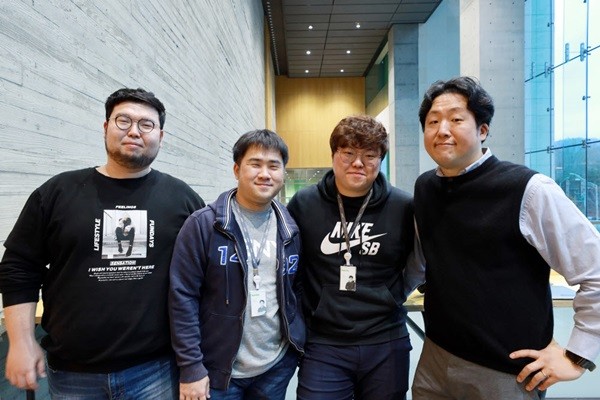Back in March, Naver’s Clova team received a request from the health center of Seongnam-si about developing an AI (Artificial Intelligence) call center system. At that time, there were many confirmed COVID-19 cases and people who came close to infected people. When there was a sudden increase in number of suspicious cases, employees from the health center had to put aside their daily tasks and focus on managing the virus. However, it was not easy to manage the virus even when about 20 employees were receiving calls. It was a time when there were concerns about a possible paralysis of the health administration in Seongnam-si.
Naver, which received a SOS call from the city, handed over the task to Clova CIC (Clova Interface Connect) that developed an AI call system.
Naver put in four leader-level developers and developed an AI call center scenario that was specialized for management of active watchers. It then uploaded the scenario to its cloud and linked the scenario to IP PBX (switchboard) provided by Sejong Telecom. This was the birth of Clova CareCall. In just one week, people who were suspicious of having the virus started receiving calls from AI.
“This was only possible as Naver had advanced resources such as language model, powerful chatbot, and cloud through large-scale corpus.” said Do Kyeong-tae who is the leader of Clova CIC Platform 3. “It was a case of making a contribution to a local society through cooperation between a local government, a telecommunications company, and a platform provider.”

Between March and September, Clova CareCall had made 3,890 calls. When the number is converted in a unit of time, CareCall had called for 194,900 minutes, 3,248 hours, or 400 days. “Without any information, a person who receives a call from CareCall does not know that he or she is talking to an AI.” said Do. “Success rate of Clova CareCall was 100%.”
After Clova CareCall was introduced to the health center of Seongnam-si, its employees have been managing special cases selected by the AI. Lim Seong-soon, who is the tech leader of Clova CIC AI Product, said that Clova CareCall was responsible for simple tasks while the health center’s employees focused on more complicated tasks.
The four developers wrote a paper based on this case of Clova CareCall and publicized the paper on a global research website.
Because AI is already doing simple tasks related to making phone call in various markets such as finance, food service, and distribution, the four developers believe that there will be more uses for AI in the near future. Lee Joon-heng, who is the tech leader of Clova CIC Platform 3 team, said that the developers were able to prove that AI can also be used in sensitive areas after handling personal, medical, and public information through Clova CareCall.
Naver plans to continue to improve its AI call center solution by using high-performance language model “GPT-3”, which was recently introduced, supercomputer, and other means.
“We are currently focusing resources that were used to develop conversation design tools on more complicated and rapid tasks.” said Ko Seok-hyeon who is the leader of Clova CIC Conversation Engineering. “Naver is prepared to make contributions towards solving social issues through AI.”
Staff Reporter Kim, Siso | siso@etnews.com